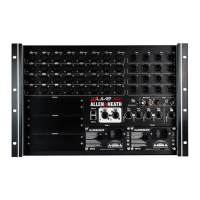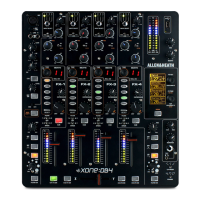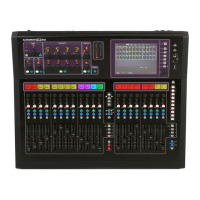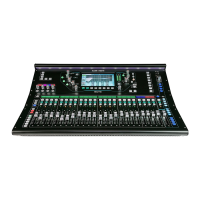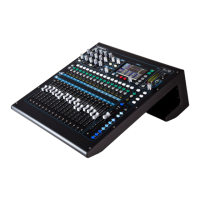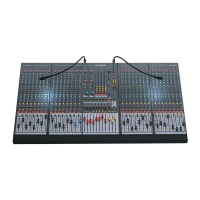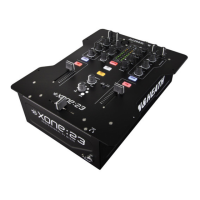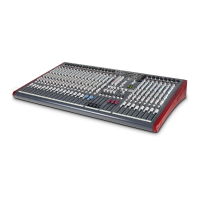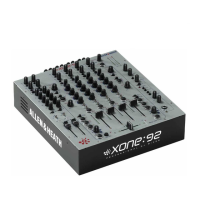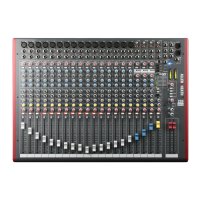The equaliser (EQ) is one of the most important signal processors in live sound mixing. It
allows the tonal response of the signal to be precisely adjusted to enhance selected frequencies,
for example to brighten up a dull guitar sound, or to deal with problems such as acoustic
feedback and instrument resonance. All input channels feature 4-band parametric EQ.
Parametric means that the parameters for each band can be separately controlled. Each has its
own variable gain control to boost or cut the frequencies selected using a sweep control. The
low frequency (LF) band has a shelving response and affects all frequencies below the selected
frequency. The high frequency (HF) band is shelving and affects all frequencies above the
selected frequency. The low mid (LM) and high mid (HM) bands have a bell shaped response
and affect frequencies either side of the selected frequency according to the width control. A
variable frequency high pass filter (HPF) is automatically selected by turning the LF gain to
minimum. This is useful in eliminating the annoying ‘popping’ sound produced when close
miking vocals. The effect of the EQ controls is displayed on the LCD as a large level versus
frequency graph.
The AB amplifier outputs each feature a 10-band graphic EQ for overall frequency adjustment,
for example to compensate for room acoustics or loudspeaker characteristics, or to tailor the
foldback monitor. These may be linked for stereo operation or used independently. The
extreme frequency bands are useful for filtering out very low and high frequencies to prevent
the amplifiers wasting energy on inaudible sounds.
An in/out switch is provided so that comparisons can be made between the original and the
adjusted signals. The EQ settings can be easily copied from one channel to another, copied
between memories, reset flat, or the recent changes can be undone.
The
includes much of the signal processing usually found in the outboard equipment rack.
Each input channel features both a noise gate and a compressor. These can be used to correct
problems with the sources or used creatively for effects. The noise gate shuts off signals below
a preset level to eliminate background noise typical of old keyboards and guitar effects boxes.
Controls include threshold level, attack and decay. The compressor reduces the dynamic range
of the signal and is typically used to control vocal microphone levels. It can also be used
creatively, for example to tighten up a bass guitar sound. How much compression you apply is
determined by the drive control. This combines several parameters of the compressor including
threshold, ratio and makeup gain into one control making it very easy to set up. Other controls
include response and hard/soft knee.
The
features two independent built-in stereo effects processors. FX1 provides a wide
range of echo and modulation effects including mono/stereo echo, chorus, flanger, tremolo and
vibrato as well as foot pedal volume control. FX2 provides different types of reverb and
echo+reverb multi-effects. FX1 is an ‘Insertion Effect’. Individual channel wet/dry controls set
how much signal is routed through the effects channel or direct to the mix. FX2 is a ‘System
Effect’ with the signal always routed direct to the mix (dry). The amount of effect (wet signal
such as reverb) is set using the individual channel send controls which add the effect to the mix.
FX2 can be fed to FX1, and FX1 can be fed to FX2, for example to add reverb to an echo. The
provides 40 presets per effect. Each has up to four parameters which can be user adjusted
to create precisely the effect required. Parameter changes are stored in the song memories.
Presets can be easily reset to the factory default. The effects can be muted using footswitches
or their levels controlled using foot pedals. A fader, mute switch and PFL switch are provided
for each effects channel.

